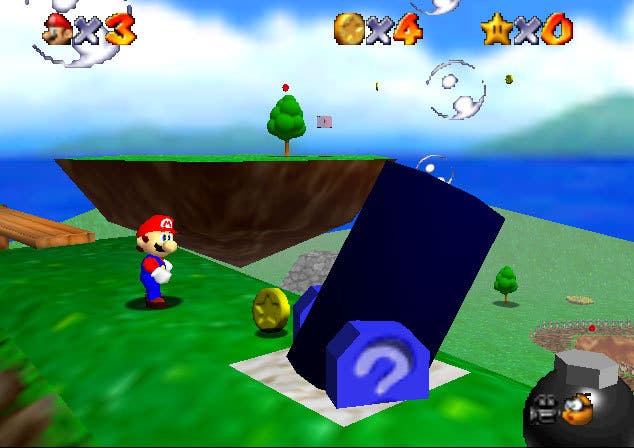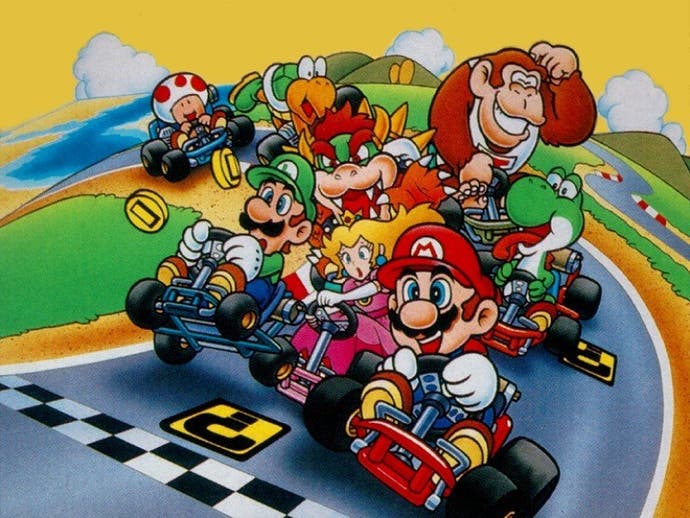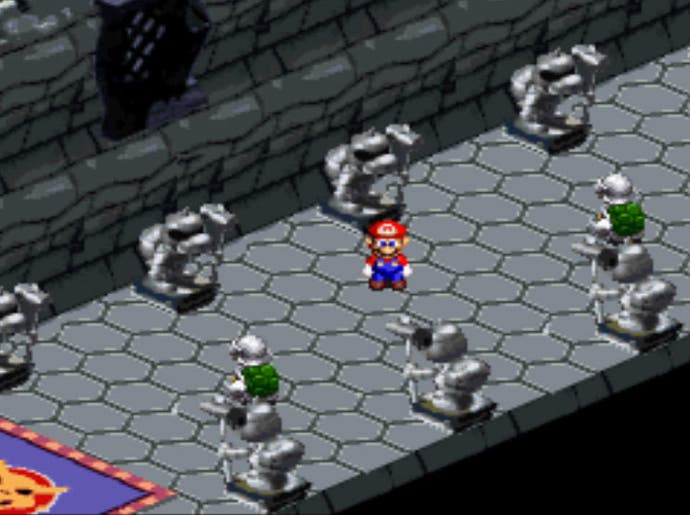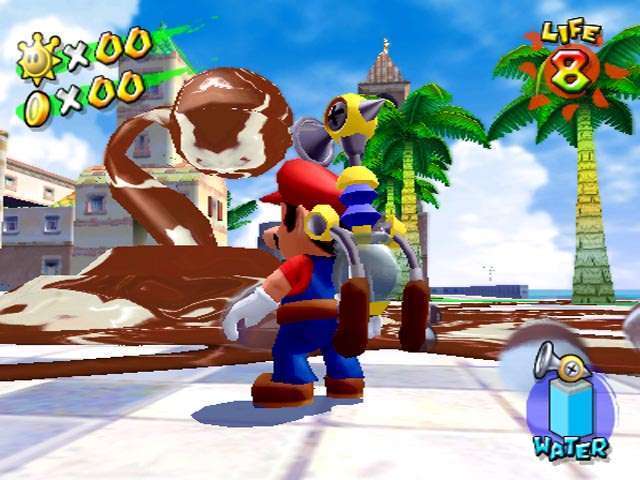The History of Mario
Twenty-five years of plumbing the heights.
It all came good in the end though. Even with the PlayStation arriving on the scene, and making us all go "ooh" and "aah" with the prospect of games that came on shiny discs rather than Fisher Price plastic bricks, Mario had one last trick up his sleeve. Super Mario RPG, developed by the Final Fantasy love muffins at Square, proved a more than appropriate swansong for the 16bit era, even if Square did rather obscure its release with Chrono Trigger, their other (better) SNES role-player. Even now, it's quite weird to see Mario exploring and turn-based-combating in what is essentially a technical precursor to Final Fantasy VII. Still, it added yet another genre to the platform king's arsenal, and laid the groundwork for some truly great Mario role playing games to come.
Notable Oddity: The derided 1994 CD-i game Hotel Mario, often regarded as one of the worst things to bear his name, was the result of talks between Nintendo and Philips to develop a CD drive for the SNES. After abandoning development on Super Mario's Wacky Worlds, the electronics giant shovelled out this steaming mess. Buried under reams of clunky FMV animation sequences, the game itself was little more than a really rubbish version of Elevator Action, since the CD-i proved laughably incapable of matching the SNES processing power.
1996 to 2001 - The N64 years
As the time-dozer continued to crush history into a big flat thing, Nintendo made the belated leap into the next generation (which, from our vantage point riding in the time-dozer cabin, clearly means "the one before last generation"). However, in just a few short years, the gaming landscape had changed beyond recognition.

Having chosen Sony over Philips to help develop a CD drive for the SNES, before backing out on the deal at the last minute, this abandoned research came back to bite Nintendo in the bum when electronics giant Sony took the idea and turned it into a games console all of their own. Compact and capable of doing wazzy things with 3D polygons, the PlayStation proved to be an instant draw for the generation of young adults who had grown up nestled in the twin bosoms of Sega/Nintendo. As the games market chased this hip new audience with clubland soundtracks and cutting edge graphic design, there didn't seem to be much place for the likes of Mario, with his cheery ways and whimsical lack of sex and violence.
Launching the N64 with twice the processing power as Sony's console, but still using the expensive and chunky cartridge system, it's clear in retrospect that Nintendo was out of step with the market for the first time in over a decade. This didn't stop some of the greatest games of that generation appearing exclusively on the N64, but it did mean that lots of people never bothered to see them. It was Super Mario 64 that had most of us intrigued, of course. How would this prototypical 2D platformer work in a 3D world?
Extremely well, was the relieved answer. Helped enormously by the analogue control of the N64 pad, the game made the stilted 3D controls of PlayStation rivals Tomb Raider and Resident Evil look positively cumbersome. Where once we had run and jumped in front of parallax backgrounds, now we guided the fleshed-out Mario through seamless fields, castles and all the other environments we'd come to take for granted. Our hero could swim, climb, even swoop majestically around the scenery with his Wing Cap - a beautifully realised ability that still makes me smile like a loon two hardware iterations later. What impresses most, looking back, is how it still feels like a Mario game. So many titles lost sight of what made them special when they jumped on the 3D bandwagon, yet you can play Super Mario Bros alongside Super Mario 64 and clearly see the thematic and aesthetic thread tying them together.

An update of Mario Kart soon followed in 1997, using the muscle of the N64 to include such crazy track details as hills and bridges, and although it was well-received it certainly doesn't revolutionise its source material in the way Super Mario 64 did.
Mario spent the rest of this generation living it up in both his new Mario Party series, which found him and his pals indulging in the sort of communal minigame madness that would later save Nintendo from the scrapheap, and in a series of swanky updates of the original NES sports games which so cheekily featured Mario cameos. Mario Golf and Mario Tennis were both decent enough as bouncy basic sports games, but it was pretty apparent that the Mario connection was there for marketing purposes. Mario Tennis disgraces itself worst in this regard by hamfistedly introducing the redundant character of Waluigi, Luigi's own Wario-style nemesis. It's no surprise that the character swiftly retreated to the back of the Mario character roster. Mario also, much like every other character in the Nintendoverse, dutifully turned up for Super Smash Bros to punch his colleagues in the face.

But then, much as Super Mario RPG squeaked over the finish line just before the SNES passed into history, so Paper Mario arrived just in time to see everyone and their dog shuffling morosely away from the N64, muttering about cartridges and wonky release schedules. "Hey, come back!", Paper Mario cried, "I'm really great, you'll like me!" But it was too late. Maybe next generation. Or the one after that.
Notable Oddity: The Japan-only release of the N64DD disk drive expansion brought with it some very curious Mario-branded utility programs. The Mario Artist range, inspired by the Mario Paint package for the SNES, included an art studio and a 3D modelling program. There was also a rudimentary online mode, allowing users to connect to a central Net Studio and share their work. In a similar vein, and also restricted to Japan, Mario no Photopi was a modified N64 cartridge that could accept SmartMedia cards allowing users to import and export their graphics. Almost ten years later and the feature is standard fare, another example of Nintendo being a good decade or so ahead of its time.
2001 to 2006 - The Gamecube years
If the Nintendo 64 era found Nintendo wrong-footed by unexpected shifts in the gaming demographic, the dark barren Gamecube period had the once-mighty console leader bloodied and punchdrunk on the ropes. Even the familiar foil of Sega had fallen by the wayside, leaving Nintendo stuck between two new gaming goliaths, both out for each other's blood. And as Sony and console newcomers Microsoft traded body blows, the Gamecube - often mocked for its plastic handbag appearance, tiny discs and childish demeanour - sank without trace.

At least the SNES and the N64 had debuted with genre-defining Mario titles for an early lead - the best the Gamecube could offer was Luigi's Mansion, a ghostly hoover-em-up in which Mario's key role is to vanish mysteriously, giving his lanky brother his first turn in the spotlight since the 1992 PC educational adventure, Mario Is Missing! OK, Luigi's Mansion is far from a bad game - it's just a little underwhelming considering the high expectations that had built up for a Mario-related launch title. It's incredibly short, more than a little repetitive and almost entirely devoid of the sort of joyous invention and exploration that typify the high points of the series. It's no Super Mario World or Super Mario 64, that's for sure.
More disappointments lay in store. After building themselves up to a frothing fever pitch of anticipation for the long-awaited proper sequel to Super Mario 64, fans could only let out a curious gust of deflation when Super Mario Sunshine finally arrived in 2002.
